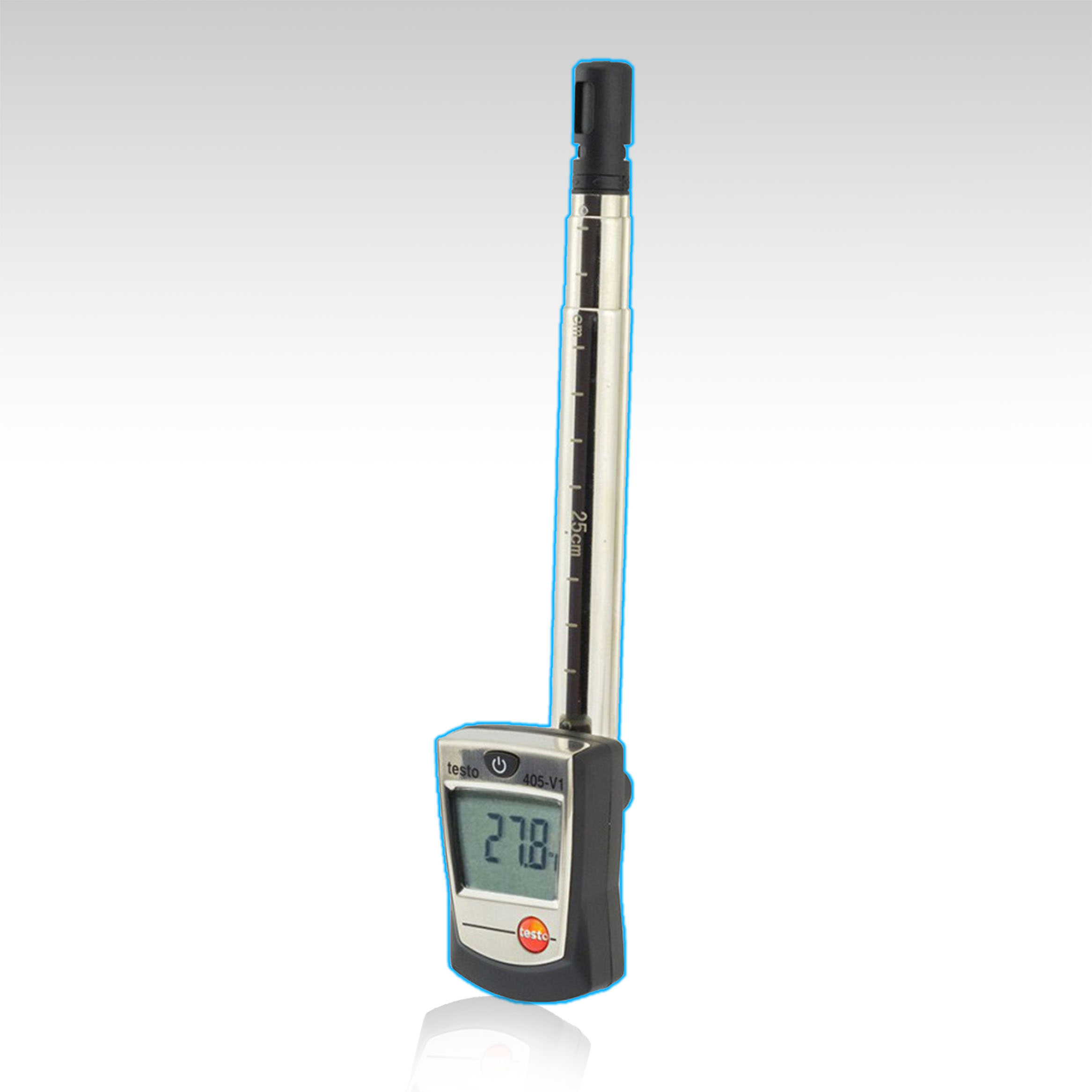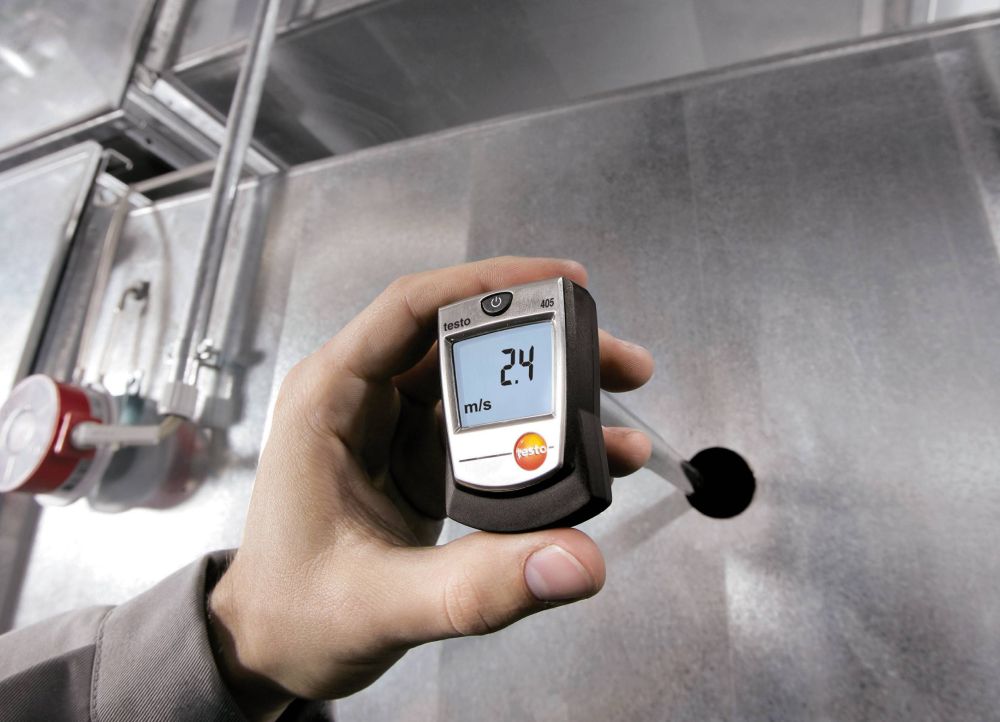If you perform quick check measurements in ventilation ducts or rooms as an HVAC engineer, the testo 405 thermal anemometer is a must-have. You may measure air flow, volumetric flow, and air temperature with the thermal anemometer, which has a permanently mounted telescope. The flow measurement range is 0 to 10 m/s, and volumetric flows can be computed up to 99,990 m3/h.
The thermal anemometer’s extendible telescope (up to 300 mm) makes it ideal for flow measurements in ventilation ducts. The LED display can be swivelled into a variety of settings, making it easy to view the information. The duct bracket (included in the delivery) provides significant benefits. This can be used to orient the telescope in the best possible way.
You may also use the thermal anemometer testo 405 to measure air velocity in rooms to examine indoor air quality because it measures particularly accurately in the range of 0 to 2 m/s. The thermal anemometer can quickly find and precisely measure low air velocities, such as those seen in draughty windows.
Sensor protection: the rotating protective cap protects the flow sensor from mechanical stress when the testo 405 thermal anemometer is not in use.
If you perform quick check measurements in ventilation ducts or rooms as an HVAC engineer, the testo 405 thermal anemometer is a must-have. You may measure air flow, volumetric flow, and air temperature with the thermal anemometer, which has a permanently mounted telescope. The flow measurement range is 0 to 10 m/s, and volumetric flows can be computed up to 99,990 m3/h.
The thermal anemometer’s extendible telescope (up to 300 mm) makes it ideal for flow measurements in ventilation ducts. The LED display can be swiveled into a variety of settings, making it easy to view the information. The duct bracket (included in the delivery) provides significant benefits. This can be used to orient the telescope in the best possible way.
You may also use the thermal anemometer testo 405 to measure air velocity in rooms to examine indoor air quality because it measures particularly accurately in the range of 0 to 2 m/s. The thermal anemometer can quickly find and precisely measure low air velocities, such as those seen in draughty windows.
Sensor protection: the rotating protective cap protects the flow sensor from mechanical stress when the testo 405 thermal anemometer is not in use.






























